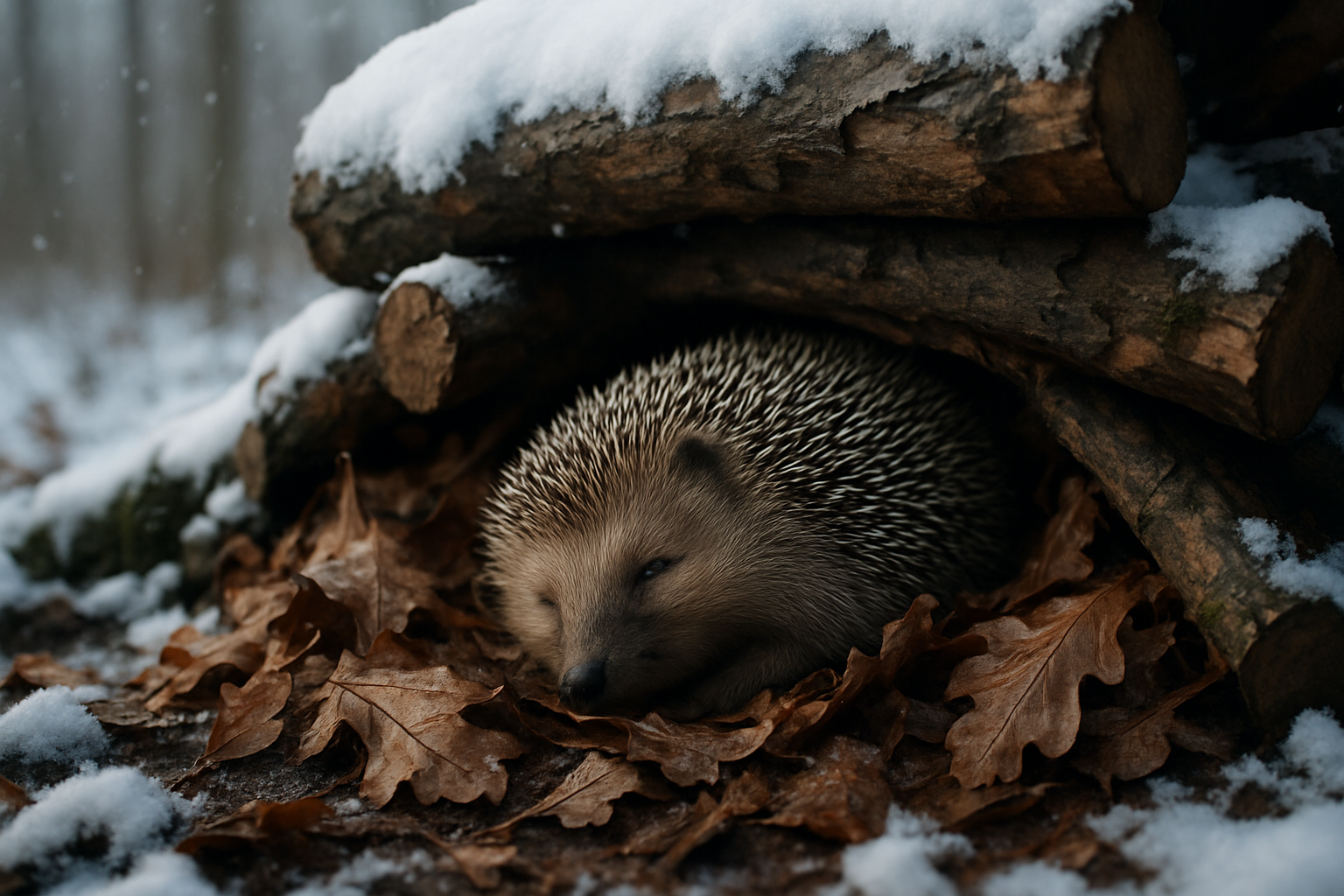Hedgehog Hibernation: Unraveling Nature's Winter Survival Strategy
In the realm of animal adaptations, hedgehog hibernation stands out as a fascinating phenomenon that captivates both scientists and nature enthusiasts. These prickly creatures, known for their unique defense mechanism, have developed an equally remarkable strategy to survive harsh winter conditions. This article delves into the intricacies of hedgehog hibernation, exploring its biological mechanisms, environmental triggers, and the challenges faced by these resilient animals during their winter slumber.

The Biological Mechanics of Hedgehog Hibernation
At the heart of hedgehog hibernation lies a series of intricate biological processes. As autumn approaches, hedgehogs begin to prepare for their winter dormancy by increasing their food intake and building up fat stores. This period, known as hyperphagia, is crucial for survival during the long months of inactivity ahead.
Once hibernation begins, a hedgehog’s body undergoes significant changes. Their heart rate slows from the normal 190 beats per minute to a mere 20 beats per minute, and their body temperature drops from 35°C to just above freezing. This drastic reduction in physiological activity allows hedgehogs to conserve energy, burning through their fat reserves at a much slower rate than during their active periods.
Environmental Triggers and Timing
The onset of hedgehog hibernation is closely tied to environmental cues. Decreasing daylight hours and falling temperatures serve as primary triggers, signaling to hedgehogs that it’s time to prepare for winter. However, the exact timing of hibernation can vary depending on geographical location, local climate conditions, and individual factors such as age and health status.
In regions with milder winters, hedgehogs may enter shorter periods of torpor rather than full hibernation, waking periodically to forage for food. This flexibility in hibernation patterns highlights the adaptability of these creatures to varying environmental conditions.
Hedgehog Hibernation Sites: Choosing the Perfect Winter Home
Selecting an appropriate hibernation site is crucial for a hedgehog’s survival. These animals typically seek out sheltered locations that offer protection from predators and harsh weather conditions. Natural sites such as piles of leaves, logs, or dense undergrowth are common choices. In urban and suburban areas, hedgehogs may opt for man-made structures like garden sheds, compost heaps, or specially designed hedgehog houses.
The ideal hibernation site provides insulation against extreme temperatures and maintains a stable microclimate. Hedgehogs often line their chosen spots with leaves, grass, and other soft materials to create a cozy nest that helps retain body heat during their long winter sleep.
Challenges and Risks During Hibernation
While hibernation is an effective survival strategy, it’s not without risks. One of the primary challenges hedgehogs face is maintaining sufficient body weight to survive the winter. If a hedgehog enters hibernation without adequate fat reserves, it may not have enough energy to last until spring, leading to starvation.
Climate change poses an additional threat to hibernating hedgehogs. Warmer winters and more frequent temperature fluctuations can disrupt hibernation patterns, causing hedgehogs to wake prematurely and expend precious energy. These disturbances can have severe consequences, potentially leading to increased mortality rates among hedgehog populations.
Conservation Efforts and Human Impact
As hedgehog populations face decline in many regions, conservation efforts have become increasingly important. Wildlife organizations and researchers are working to better understand hedgehog hibernation and develop strategies to protect these vulnerable animals during their winter dormancy.
Homeowners and gardeners can play a crucial role in supporting hedgehog conservation by creating hedgehog-friendly spaces. This includes providing suitable hibernation sites, avoiding the use of pesticides, and maintaining diverse habitats that offer food and shelter throughout the year. Some conservation groups even promote the use of specially designed hedgehog houses, which can cost anywhere from $30 to $100, providing a safe and cozy winter retreat for these spiny mammals.
Human activities, such as habitat destruction and fragmentation, pose significant threats to hibernating hedgehogs. The loss of suitable hibernation sites and the increase in urban development can force hedgehogs to seek shelter in less-than-ideal locations, potentially exposing them to greater risks during their vulnerable winter state.
Emerging Research and Future Directions
Recent studies on hedgehog hibernation have shed light on the physiological mechanisms that allow these animals to survive prolonged periods of inactivity. Researchers are particularly interested in understanding how hedgehogs can lower their body temperature and metabolic rate without suffering tissue damage or organ failure, as such insights could have potential applications in human medicine.
Additionally, ongoing research is exploring the impact of climate change on hedgehog hibernation patterns and investigating potential strategies to mitigate its effects. This work is crucial for developing effective conservation measures and ensuring the long-term survival of hedgehog populations in a changing world.
As we continue to unravel the mysteries of hedgehog hibernation, it becomes increasingly clear that these remarkable creatures have much to teach us about adaptation, resilience, and the intricate balance of nature. By deepening our understanding of their winter survival strategies, we not only gain valuable scientific knowledge but also strengthen our ability to protect and preserve these beloved spiny mammals for generations to come.





